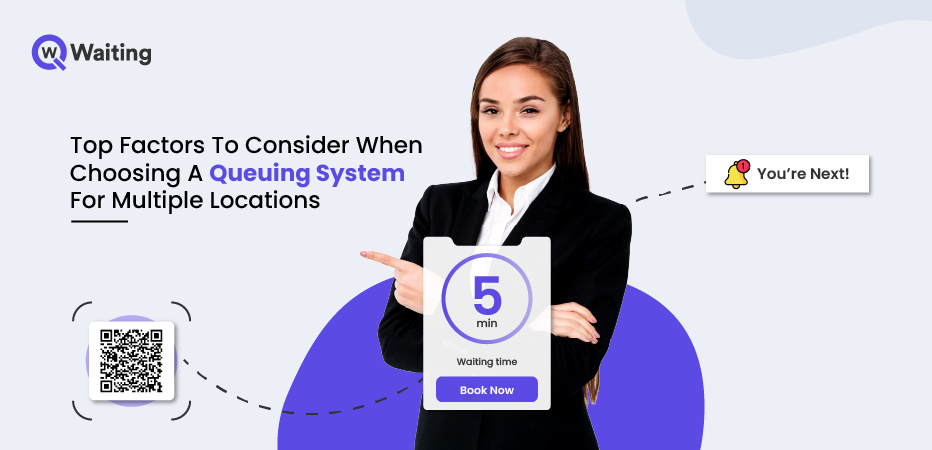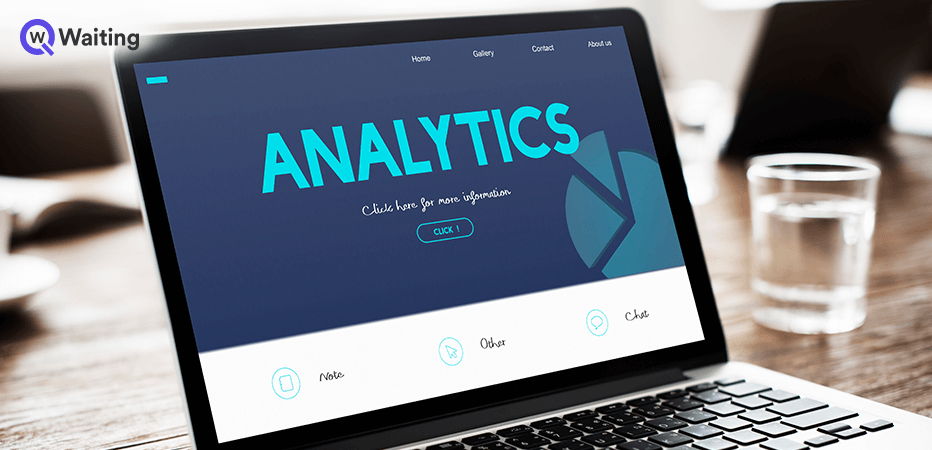
Queue management has become the need of the hour for every organization in order to manage the organizational operation effectively and efficiently. However, it’s quite challenging to manage the operations of multiple branches for any store or organization. Thus, each and every organization seeks a solution that can streamline the operations of multiple branches. No worry, an ultimate solution for the same is a queuing system for multiple locations. Any organization needs a queue management system for various locations to boost worker efficiency and combine branch operations and capabilities. Also, every day, businesses and organizations deal with an excessive number of consumers, necessitating an effective platform for managing client flow. Thus, companies require data and business intelligence to make informed decisions for the future. A queue management system for multiple locations is set up for this reason. All of these things are made easier by a queue management system.
However, several considerations must be made when implementing a new queue management system for various locations. No worries, in this blog, I will discuss several things a company should consider when selecting a queue management system.
Essential Factors To Keep In Mind While Choosing A Queue System
Selecting the right queue management software is essential for businesses to service consumers properly. Here are essential considerations to make while choosing a Customer Queuing System.
Flexibility and Scalability

When selecting a queuing system for many sites, scalability and flexibility are essential factors to take into account. Different peak times, visitor traffic patterns, and customer flow needs may apply to each branch. The queuing system should be flexible enough to meet the needs of stores of varying sizes and customer traffic. It should be able to handle a high volume of customers without sacrificing service quality during peak times. The system should be flexible enough to handle different queuing patterns, such as appointment-based, virtual, or linear, as each location needs.
Compatibility with Existing Infrastructure
Seamless interaction with the current infrastructure is essential for efficient operations and data administration across many sites. The queuing system should function seamlessly with other company systems, such as point-of-sale (POS) systems, customer relationship management (CRM) software, and communication platforms. This connection makes real-time data transmission, enhanced client experiences, and simplified administrative procedures possible. For instance, integration with a CRM system can enable targeted customer contacts. On the other hand, an interface with a POS system allows smooth transitions from the queuing system to payment processing.
Customization and Branding
Customization and branding options are crucial to keeping branding consistent across numerous sites. The queuing system should offer capabilities for customization that fit each location’s own branding standards and client engagement tactics. To establish a consistent brand experience, customization should include visual components like logos, colors, and messaging. The system should modify queuing characteristics to enable each location to customize the queuing experience to its particular requirements. It includes waiting time notifications and queue prioritization.
Real-time Monitoring and Reporting

Effective management of several sites requires real-time monitoring and reporting capabilities. The queuing system should provide comprehensive insight into queue lengths, wait times, and client flows at each location. Businesses can make data-driven choices, allocate resources more effectively, and proactively handle problems through real-time data. Comprehensive reports and analytics should be available to acquire insights into client behavior, spot patterns, and monitor key performance indicators (KPIs) across many locations. These reports can be used to evaluate service levels, spot bottlenecks, and make well-informed queuing process adjustments. From my perspective, I think this is the most important factor an organization should consider while implementing the Customer Queuing System.
Customer Experience Benefits

Improving the customer experience should be the top priority when choosing a queuing system for several sites. Think about elements that boost general customer happiness and reduce perceived wait times. Customers can feel less anxious and frustrated by receiving SMS or email reminders that notified them of their queue status and anticipated wait times. They can join the queue remotely or check in when they arrive using self-service kiosks or smartphone apps, which reduces physical wait times. Customers have more control over their time through appointment-based or virtual queuing options, lessening the need for actual lines. Choose a queuing system with a user-friendly interface and that is simple to use & navigate, guaranteeing an excellent client experience from beginning to end.
Cost-Effectiveness

Multiple-location enterprises must carefully evaluate the cost-effectiveness of their queueing system. Consider the system’s initial price, ongoing maintenance charges, and any other costs that may be incurred. Examine various pricing strategies and take the long-term return on investment into account. The smart queuing system’s capabilities and cost must be balanced to ensure value for money and fit within the business’s budget.
Security and Privacy of Data

When selecting a queuing system for many sites, protecting client data and guaranteeing system security are of the utmost significance. Analyze the system’s security components, including data encryption, user access restrictions, and conformity to data protection laws. Strong security measures should be in place for the queuing system to protect private client data and shield it from unauthorized access. Additionally, take into account the system’s data privacy policies and confirm that they comply with the company’s privacy standards and client expectations.
Ease of Implementation and User Acceptance
Consider how simple it will be to deploy the queue system at various places and any potential difficulties with user acceptance. The system should offer assistance for easy deployment and have clear implementation recommendations. To guarantee that staff members can immediately grasp and use the system, evaluate the user interface and training materials. Intuitive workflows and user-friendly interfaces promote increased user adoption rates and reduce transitional interruptions.
Insights and Analytics

Analytical skills are required for businesses to gain meaningful insights from queuing system data. Powerful analytics technologies that offer an in-depth understanding of customer behavior, queue patterns, and operational performance should be included in the system. Making data-driven decisions, identifying areas for development, and allocating resources more effectively are all made possible by analyzing these findings. Inspect the system for features that enhance its analytical capabilities, such as trend analysis and integration of user feedback.
The Closing Note
To sum up, choosing the right queuing system for several locations necessitates a thorough assessment of numerous criteria. Critical factors include scalability, flexibility, integration options, real-time monitoring and reporting, technical support and maintenance, security considerations, simplicity of use, and analytics capabilities. Organizations can enhance operational efficiency, customer satisfaction, and queuing across all sites by picking a system that meets the business’s needs. I hope so, via this blog, you can decide certain factors while choosing a queue management system for your organization.
